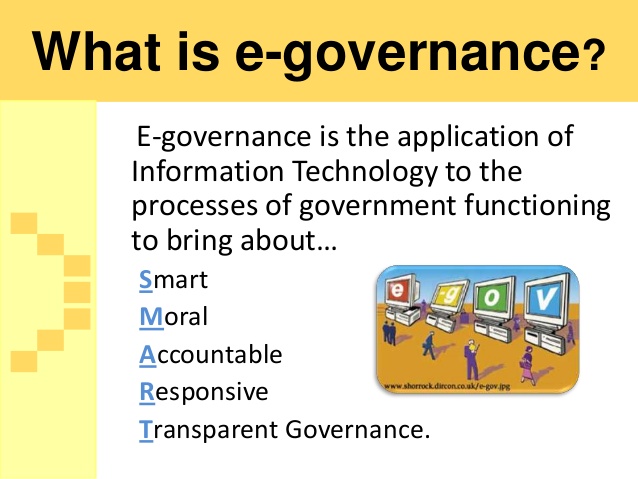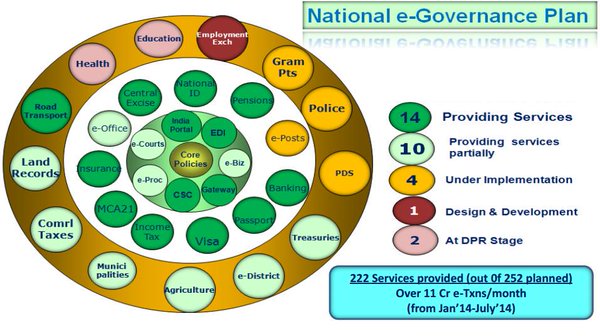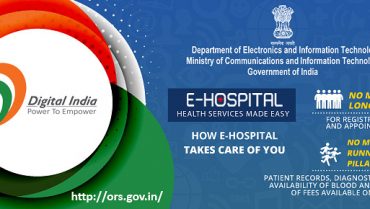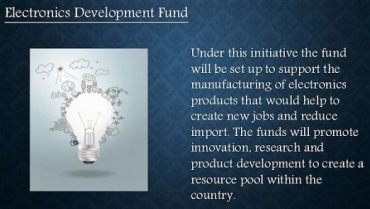INTRODUCTION
There is an interconnection between e-governance, good governance, economic development, and democracy. E-governance can improve the governance and the improved governance, in turn, can facilitate economic development (due to better services, better evaluation, monitoring, better implementation and easy access to information)and democracy (due to accountability transparency, efficiency, responsiveness etc.,). E-governance is an instrument of good governance because it facilitates efficiency, accountability, transparency, reliability, and responsiveness in governance through the interface. It would be useful to define clearly governance and good governance to have a better understanding of e-governance. Generally, governance includes the management of public affairs (resolving conflicts, providing services, economic liberalization maintaining law and order etc.) according to established rules and procedures by exercising power. The World Bay economic liberalization has defined governance as the manner in which power is exercised in the management of country’s economic and social resources for development. Good governance should ideally have the following characteristics: the government must be democratic to achieve validity; Political officials should be accountable for their actions; The bureaucracy must be able to transform efficient and social needs; The policy making should be open and transparent; The rule of law should be maintained, the security of basic rights and property rights should be preserved, women, minorities, and sections of the society should have special protection.
The year 2001 had been declared by the Government of India as the year of e-governance. Information Technology (IT) has revolutionized human life across the globe. The telecommunication network has provided the base for the IT revolution. The explosive entry of technology into every aspect of life has changed how people live, how they work, how companies do business, how the entire economy functions and the means through which governments serve their people. IT is changing the way people communicate and interact with each other. IT is based on the concept of digitization of information. Digitization converts information of any form and nature into digital form.

IT is very useful to the government simply because, throughout the world, the government remains the single largest repository of information. At present, availability of the information stored by the government to the general populace as well as the use of this information in government business and transactions is very limited. IT has the potential of improving the access of the people to information stored and reserved for the government and use of the information in administrative processes and development and welfare activities. IT provides the cheapest, quickest and easiest way of accessing government information. Moreover, IT helps in using the information maintained by the government again and again in different application settings without any substantial additional cost.
Therefore, e-governance is that the data are given to the technological-driven public development administration system, which basically means that the distribution of state services and misuse of data to individuals is an electronic meaning. E-government also implies the ability of the people at large to obtain government services through non-traditional, electronic means, enabling access to government information and for the completion of government transactions on an anywhere and anytime basis and in conformance with equal access requirements. Information Technology has been found to be very useful tool for reinvigorating the government by enhancing its administrative capacity and organizational efficiency.
OBJECTIVES OF E-GOVERNANCE
- Improvements in the delivery of essential services to the citizens.
- Empowerment of people through the dissemination of information.
- Ensuring transparency in government business and transactions and right to information in governmental activities.
- Elimination of undesirable practices such as tours, speed money, deliberate delays, harassment, bogus document, and corruption.
- Encouraging broad-based public awareness and participation in key areas of developmental efforts.
- Maintaining due control over assets, revenues and expenditures.
- Establishing better information base for decision-making process including forecasting critical phenomenon.
- Enhancing productivity and efficiency of the administrative functions through the promotion of knowledge network.
- Making administration responsive, citizen friendly and ensuring accountability.
- Establishing legitimacy and credibility of institutions.
- Interests of citizens in general and specific beneficiaries, in particular, should be safeguarded.
- Improvement in critical, contemporary measures of performance such as cost, quality, service, and speed of an institution.

ADVANTAGES OF E-GOVERNANCE
- The democratic system works better because e-governance facilitates direct access to the interface between citizens and the government;
- The government routinely collects and stores a huge amount of information related to the people it serves as well as related to the services it provides to the people. In addition, the government also sponsors a number of dependent studies and evaluations about the performance of the government and the efficiency of public services, which generate a good deal of information. Government maintains records of its functioning, public policies, programmes etc.
Generally, access to such information had been limited. Now, e-governance provides the cheapest, quickest and the easiest means of accessing government information. The government can use this information for itself in administrative processes and development and welfare activities. Moreover, Information Technology helps in using the information maintained by the government again and again in different application settings without any substantial additional cost. - Information technology provides some unique opportunities and opportunities for new use of information collected by the government in the planning and implementation of welfare activities and programs. It provides a government opportunity to increase the education system.
- E-governance has been found to facilitate informed decision-making in the public and development administration system thereby improving its efficiency and effectiveness in delivering services to the people. It enhances the analytical capacity of the public and development administration system thereby promoting comprehensive monitoring and assessment of the performance of development and welfare activities It also facilitates innovative use of information collected and maintained by the government in the form of innovative and imaginative information linkages and information sharing at all levels of the government.
- E-governance directly provides a package of efficiency, timed and cost effectiveness; More, demolition of transparency, discretion and meditation, and above all, customer orientation, and civic safety.
- It helps in the development and maintenance of a transparent and stable economic and regulatory environment, which is conducive to skilled private sector initiatives (for example, value system, exchange, and business system and banking system and their respective rules).It also helps in institutional reforms of treasury, budget preparation and approval procedures, tax administration, accounting and audit mechanisms, central banking operations and official statistical function;
- It improves the management of public resources, provides different services at one window often called single window clearance, flattens organizational structure, reduces paperwork, improves team performance, and responds more efficiently to the needs of people.
- Office automation is possible through Information Technology. Office automation is the use of information processing technology in an office environment to create process, store, retrieve, use and communicate information to improve the performance of managerial professional, technical, administrative and clerical tasks.
- A high degree of alienation between the citizens and administrators can be considerably reduced. Needless harassment of citizens can be substantially eliminated;
- E-governance provides low cost, high quality, and speedy services to the citizens;
- Government’s business and transactions are transparent, accountable, efficient, responsive and result-oriented;
- E-governance establishes legitimacy and quality of establishments, improves the standard of a lifetime of voters, empowers voters by permitting the proper to info, improves the productivity of staff and assists in reducing corruption.
- Citizen-centric governance is good governance. Every government is supposed to provide good governance to its citizens who are entitled to it. It is possible to deliver through effective e-governance.
E-GOVERNANCE PROGRAMME IN A.P.
One of the foremost objectives of IT policy of Government of Andhra Pradesh is using IT applications within the governance that area unit e-governance. So, e-governance is a significant part of the IT policy of the Andhra Pradesh Government. In addition, e-Governance is the backbone of the ongoing administrative reform process to achieve good governance in Andhra Pradesh. Now, the goal of e-governance is to establish a smart government in Andhra Pradesh. Therefore, to achieve good governance,
The Andhra Pradesh government is committed to providing easy, reliable information to the citizens and to improve the quality and accountability of the efficiency in the government, to take advantage of modern information and communication technology to provide citizens with more convenient, accessible, transparent, accountable services.
As a part of state administrative reform process, the goal of good governance through e-governance (IT applications) is because good governance facilitates economic reforms and economic development, and assists in the democratic process. In fact, Andhra Pradesh is the first state in India to design a state-wide computerization program covering all levels of the administrative spectrum. Moreover, the government has defined an overall IT architecture for the state that will ensure consistency and interoperability
of the databases of different government agencies and departments. Procedures are mystifying and obscure, giving the bureaucracy immense discretion and, therefore, power. As a result, most transactions with the government are time-consuming and frustrating. AP Governments have committed you to improve this situation because e-Governance is to remove transparency, accountability, efficiency, and discretion. Corruption will be eliminated. Quick and easy transactions would be made possible.
IT APPLICATIONS IN A.P.-DIMENSIONS
The Andhra Pradesh government is using IT applications in four or five dimensions for its practical and governance purposes to establish SMART Government. They are:
- CM’s IT application for monitoring and control of entire development in AP.
- Providing services to citizens.
- Using IT within the government to improve efficiency and quality in government.
- Using IT for planning, creating a citizen database and monitoring land use in conjunction with remote sensing; and.
- Providing information to citizens.
For this purpose, the state has been taking initiatives like defining IT architecture, creating infrastructure, reviewing regulation, etc. to establish an electronic government. Moreover, it has been implementing IT projects like CARD, TWINS, APSWAN etc. Some are pilot projects and some other fully operational projects.

CONCLUSION
E-governance means the transaction of information and communication technologies in government business and delivery of better government services, providing information to the citizens and using electronic means to make the government more efficient in its operations. Governance facilitates the better interface between the citizens and government. Governance can improve the governance and the improved governance (good governance), in turn, can facilitate development and democracy. E-Governance is one of the main objectives of the Andhra Pradesh government’s IT policy and is part of the ongoing administrative reform process to achieve good governance. The Government has set a goal to establish a smart (simple, ethical, accountable, responsive and transparent) government through e-governance.
In order to establish an easy government of Andhra Pradesh, to provide easy and reliable information to the people, it is using IT applications in the state’s governance in various dimensions for practical purposes for efficient, transparent and accountable services. To make the government more efficient, transparent and responsive, to help the Chief Minister to work more efficiently and to get feedback from the people and to give the opportunity to people for the practice of e-democracy. The main limitation of e-governance is that it has not yet reached villages, divisions, and even sub-departmental areas. It is confined to other major cities, such as the state capital city, district headquarters and Vijayawada, Visakhapatnam. Apart from this, only the urban educated middle class, upper middle class, And some of the rural educated upper class are able to use e-governance facilities, but due to poverty, illiteracy, ignorance, and unavailability of these facilities, poor and rural people are not. Therefore, e-Governance can increase inequalities between rich and poor and rural and urban areas. This phenomenon is commonly known as the digital divide. E-governance succeeds if the government’s efforts match people’s participation. Therefore, people participation in e-governance is essential for its success. It has been found that the participation of people in e-governance is very low as the government has not taken any concrete steps to involve people in e-governance. The government’s efforts have been limited to the use of IT applications in the governance, to provide infrastructure and to provide training to the officers. That is why the government has not been able to get the proper response from the people. Apart from this, people are playing a democratic role using e-governance facilities. People are able to get the services provided by the government. But they are not using the information provided by the government to play a democratic role in support of government policies because on one side people are not aware of the public and on the other hand, people are not ready for this role by the government.
Credit- I j iris

